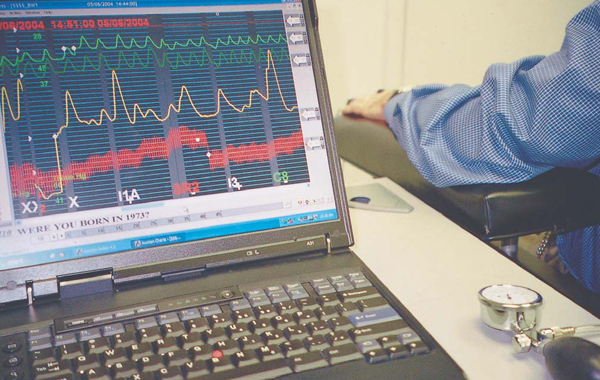How to Pass a Lie Detector Test (Whether You're Lying or Not)

If you're like most people, lying makes your heart race. It makes you pant. It drives up your blood pressure and makes you drip sweat. A polygraph machine detects lies by looking for signs of these physiological changes.
However, knowing how the machines work, you can beat them by lying with your body as well as your words. [Why We Lie]
When you're taking a polygraph test, the machine first registers the baseline of your vital signs. Examiners then trick you into lying by asking you a series of "control" questions that are only distantly related to the issue they're investigating, such as "Did you ever lie to get out of trouble?" or "Have you ever committed a crime?" Most examinees will answer "no" to such questions they're trying to come across as honest but examiners assume that the answer to at least one control question will really be "yes" (after all, you've probably lied at some point or another, and jay-walked). As soon as the examinee tells such a white lie, it puts a blip on the polygraph machine that serves as a signature of that examinee's lies.
Mixed in with the control questions are relevant questions. In a drug case, for example, a polygrapher will ask, "Did you ever use an illegal drug ?"
As authors George Maschke and Gino Scalabrini explain in "The Lie Behind the Lie Detector" (AntiPolygraph.org 2005): "The polygrapher scores the test by comparing physiological responses (breathing, blood pressure, heart, and perspiration rates) to the probable-lie control questions with reactions to relevant questions. If the former reactions are greater, the examinee passes; if the latter are greater, he fails."
In essence, an examinee's lie only counts as a lie if it registers as more of a lie than his or her control lie.
So here's how you beat the test: Change your heart rate , respiratory rate, blood pressure and sweat level while answering control questions. Send your control lies off the charts. By comparison, your answers to the relevant questions (whether they are truths or falsehoods) will seem true.
Get the world’s most fascinating discoveries delivered straight to your inbox.
As seen in the film "Ocean's Eleven", one method of ramping up your vital signs when answering control questions is to press down on a thumbtack, or some other sharp object, in your shoe. The pain from doing this will cause most of your vitals to spike, and your response will probably be read as a lie. "While this countermeasure (if properly applied) can be effective, polygraphers have developed counter-countermeasures for it (the simplest being to simply make the subject remove his shoes)," Maschke and Scalabrini write. So you'll need a back-up plan.
The authors suggest thinking exciting or scary thoughts when you recognize a control question. Alternatively, you can make yourself sweat by trying to do a somewhat difficult math problem in your head like dividing 183 by 4. Similar to the tack-in-the-shoe trick, you could also bite down on your tongue: Pain induces a similar physiological response as lying.
By contrast, when answering relevant questions, stay calm. "Just maintain your baseline breathing pattern. Your mind should be more at ease knowing that you and not your polygrapher are in control. Even if you produce a slight response when asked the accusatory relevant questions, you will have artificially produced stronger responses while answering the 'control' questions," the authors state.
The fact that it's possible to pull the wool over the eyes of a polygrapher is one reason why many anti-lie-detector campaigners so strongly object to them. "Polygraph 'testing' is an unstandardizable procedure that is fundamentally dependent on trickery. As such, it can have no scientific validity," Maschke and Scalabrini write.
- How to Win at Rock, Paper, Scissors
- How to Split Atoms In Your Kitchen
- How to Survive an Elevator Free Fall
Follow Natalie Wolchover on Twitter @nattyover. Follow Life's Little Mysteries on Twitter @llmysteries, then join us on Facebook.
Natalie Wolchover was a staff writer for Live Science from 2010 to 2012 and is currently a senior physics writer and editor for Quanta Magazine. She holds a bachelor's degree in physics from Tufts University and has studied physics at the University of California, Berkeley. Along with the staff of Quanta, Wolchover won the 2022 Pulitzer Prize for explanatory writing for her work on the building of the James Webb Space Telescope. Her work has also appeared in the The Best American Science and Nature Writing and The Best Writing on Mathematics, Nature, The New Yorker and Popular Science. She was the 2016 winner of the Evert Clark/Seth Payne Award, an annual prize for young science journalists, as well as the winner of the 2017 Science Communication Award for the American Institute of Physics.



